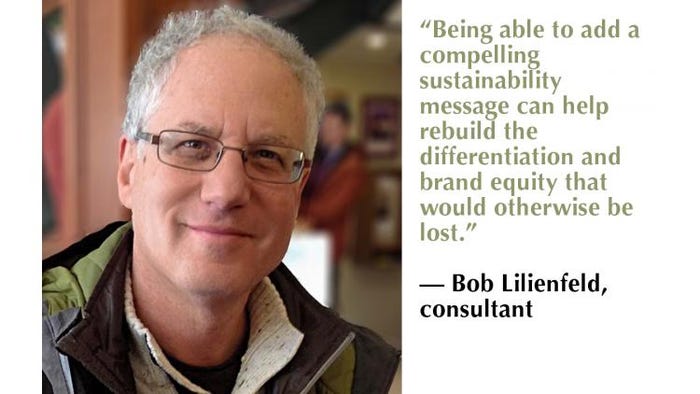Like many brand owners these days, you embrace sustainability and leverage it in your marketing strategy to appeal to eco-minded consumers. So how can you extend that halo, as it’s called, through to your packaging?
Packaging authority and consultant Robert (Bob) Lilienfeld will share his sustainable storytelling tips in a free, one-hour presentation on Wed., Feb. 7, at 10:30 a.m., at WestPack 2018 in Anaheim, Calif. He’ll give his presentation “Strategically Communicating Your Sustainability Story” in the new WestPack Hub in Booth 5297.
Lilienfeld has been involved with packaging environmental issues since the early 1990s when he helped establish a plastics recycling program of the City of Chicago’s outdoor festivals and sports stadiums. At that time, Lilienfeld also started the ULS Report (ULS=Use Less Stuff), which has gone on to become a highly read and respected newsletter. He has also been actively involved with Walmart’s sustainability initiative, serving on the Corporate Sustainability Index advisory team, the Food/Agriculture Sustainable Value Network and Waste SVN. Currently, Lilienfeld writes for a variety of packaging- and sustainability-related magazines, including Packaging Digest, PlasticsToday and Environmental Leader.
Lilienfeld gives us a glimpse of what you’ll hear during his WestPack 2018 presentation.
Why should telling the sustainability story be part of a brand’s strategy?
Lilienfeld: I just read an article about Millennials hoping to make a difference when spending and investing their money. Having a good sustainability story is an important part of their decision making process. This is especially true for legacy brands, which Millennials don’t hold in the high regard that previous generations held them. The basic assumption going forward for Millennials is that companies such as Amazon act as regulators, ensuring that whatever they sell will do the functional job and that price is therefore the most important factor in purchase decisions. Being able to add a compelling sustainability message can help rebuild the differentiation and brand equity that would otherwise be lost.

What is the best way for a brand to communicate its sustainability story and why?
Lilienfeld: By solving a problem that’s important or personally relevant to its target audience. And doing this in a credible, sincere manner. For example, people who eat tuna would naturally be concerned about the sustainability of the tuna population from two perspectives: sound harvesting/population management, and healthy oceans free of debris. Working with, and investing in, non-profits that specialize in these activities are therefore natural collaborations for the brand to list on-package.
Can you give us an example?
Lilienfeld: Problem: You want your kids to take healthy snacks to school and actually eat them. Solution: A single-serve package of carrots from a package that holds many of them. At first glance, this might seem wasteful. But here are some things to consider:
First, the package delivers the right portion, so that food isn’t wasted. Second, it’s so convenient that parents don’t have to work hard to give their children something nutritious, healthy and great tasting. That means the parent can reach for the carrots, not (just) the cookies. Third, single-serve bags mean that the container is only opened at the point of consumption, keeping the other carrots in their separate bags fresh as well.
Here, the sustainability story is two-fold: The food, and all of the resources it took to produce it, are used effectively and efficiently while not being wasted. Plus, there’s the strong social sustainability story related to ensuring healthy kids. The packaging can tell that story rather simply: “By delivering portion control, this package helps provide the goodness and nutrition you want for your children.”
What is the worst way and why?
Lilienfeld: To me, the worst solutions are those that are both purely packaging related and of no real environmental value. Think of terms like “Earth Friendly,” “Green” and “Good for the Planet.” These are hollow platitudes with no real substance in terms of the ecological value that they provide. In fact, they may not be in conformance with published guidelines of the Federal Trade Commission (FTC), or the agency’s current thinking on the subject of environmental marketing claims. Thus, they may lead consumers to believe they are making sustainable choices, when in fact there is little to no proof that they are actually doing so.
About the Author(s)
You May Also Like




